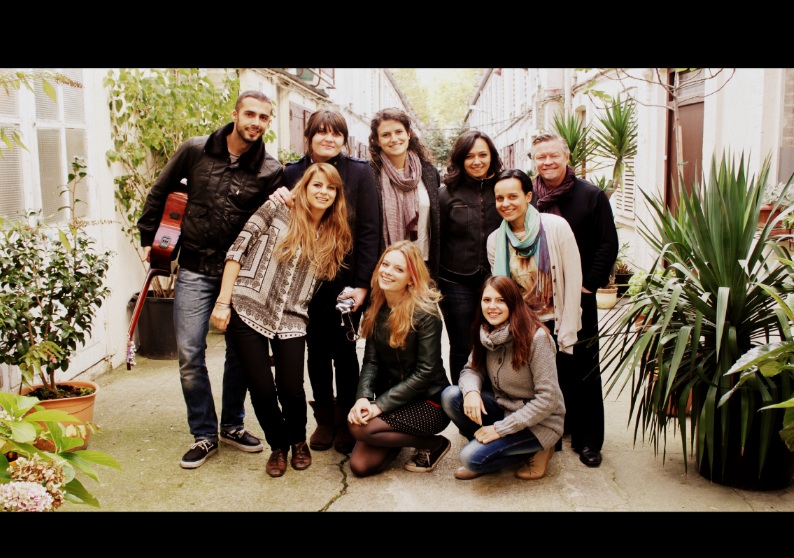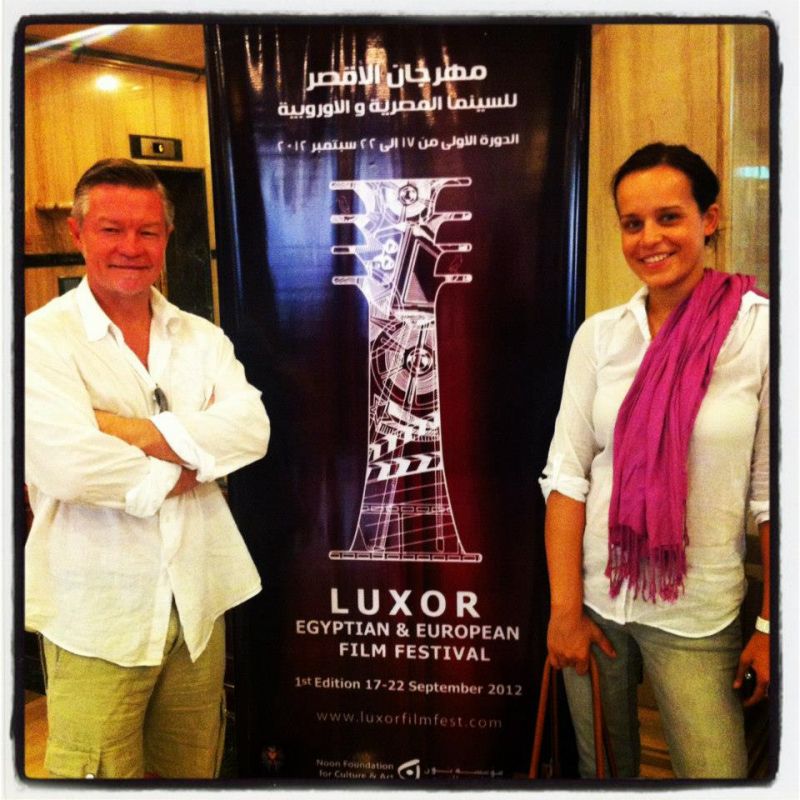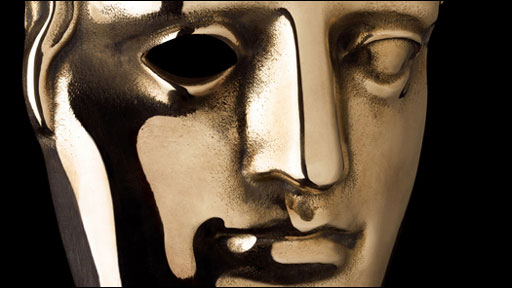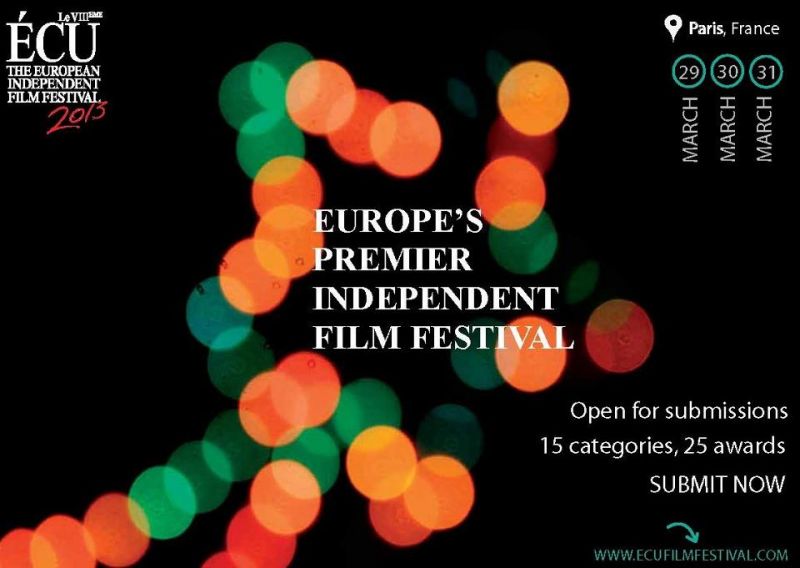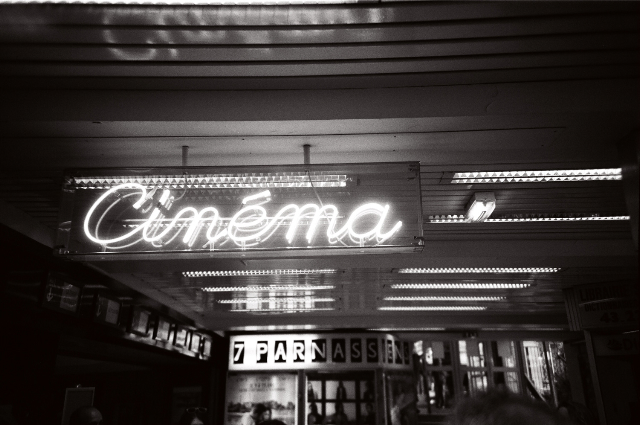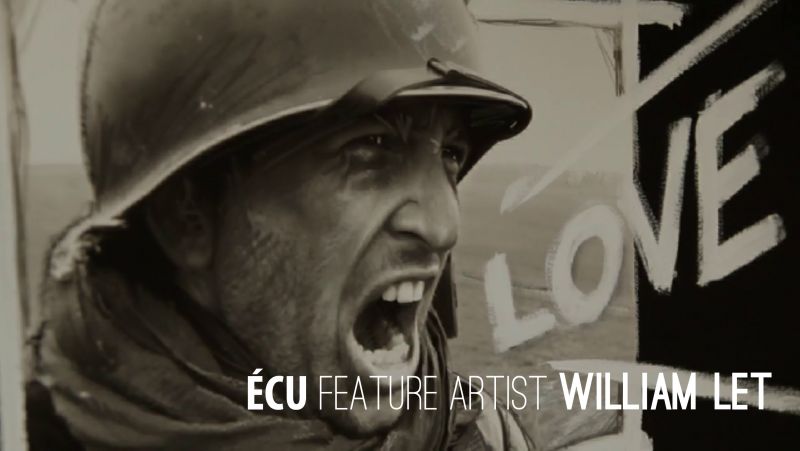|
|
||
|
Pro Tools
FILMFESTIVALS | 24/7 world wide coverageWelcome ! Enjoy the best of both worlds: Film & Festival News, exploring the best of the film festivals community. Launched in 1995, relentlessly connecting films to festivals, documenting and promoting festivals worldwide. Working on an upgrade soon. For collaboration, editorial contributions, or publicity, please send us an email here. User login |
Destination Christmas, Next Stop: Uncanny Valleyby Lindsay Macdonald The weather’s biting, the lights are up, and the tourists are out for that time of year again under the Paris Ferris wheel, beckoning men, women, girls, boys, Santas and his not-so-magical capitalist helpers to the full kitsch glory of a readymade Winter Wonderland. We welcome now a time of sharing and baking and Christmas card-making by the light of our tinsel-strewn trees. Families bond over decorating, hot coco, and a shared inability to escape in the cold. Lest we nestle too long at home, however, in unprofitable familial communion, Hollywood brings us its annual gift: the CGI family movie. From Narnia to Hogwarts to the digital North Pole, big-budget special effects whisk us away to the biggerbrighterbetter colors of its techie-chic matter-less universe. Like a ride in Santa’s sleigh, we as movie-goers get to see some pretty cool stuff, discovering hobbits and house elves and blue eco-conscious aliens like bright eye candy to our month-long turkey hangover. But then just as a compass goes crazy when it hits the poles, CGI´s GPS every so often short-circuits, going from the heart-warming to bone-chilling at the speed of the Polar Express. Enter Uncanny Valley. It was winter 2004, while watching The Polar Express, when I first found myself stranded here, among what looked like the undead cousins of bygone Christmas specials. At the snow-covered tippity-top of the world where no one can hear a child scream, it was as if jolly claymation Santa from Burl Ive’s Rudolph the Red Nosed Reindeer fell off a cliff to be digitally resuscitated as undead Nazi Santa of Uncanny Valley. So just what on God’s green Earth is Uncanny Valley? Uncanny Valley is a place that appears on no map, features on no earthly GPS, but will very likely revisit your nightmares depending on how good you’ve been to the film business this Christmas season (with goodness here being inversely proportional to a sound, untroubled sleep). In the study of robotics, scientists discovered a strange phenomenon. They found that the more a robot looked and seemed human, the more we liked the robot. Thus R2D2’s cantankerous charm. This relationship remains positive as the robot looks more and more human, with our affection and empathy for it progressing with increasing human likeness. However, something happens when the robot approaches near-humanity, and, just like poor once-jolly bygone claymation Santa, the robot falls off a strange kind of cliff, hurdling from affection to disgust. Once we reach exact human likeness, the line shoots back from disgust to highest affection, leaving in its wake an eerie below-the ground dead zone known as Uncanny valley, where cute, kind-of-real animated humans suddenly fall to weird-eyed digital Un-death. With Polar Express, Hollywood’s first zombie Santa is born. Zombie appearances continued past many a Christmas season, particularly notable at Quidditch matches in early Harry Potter movies, in the lamentable A Christmas Carol of Robert Zemeckis, and, for the adults among us, as Brad Pitt’s head as Benjamin Button. Thus years before the zombie’s sexy, somewhat cooler cousin the Vampire caught on to tweens and soccer moms dazzled by Edward’s oh-so-pale abs and Bella’s codependent moodiness, kids have been eating their Christmas turkey alongside Hollywood’s digitally undead. Like all good zombies, these uncanny un-humans capture both the mind-blowing and the mindless of big-budget digital effects. Sure they’re out to please, but they’re mostly out to feed, and whole families with weakened willpowers and wallets out for the holidays are their golden ticket. So this Christmas bust out the popcorn, take off the gloves, ready your wallet and steady your pulse. This sleigh is heading due north, Destination Christmas. Next stop: Uncanny Valley.
///
Destination Noël, prochain arrêt : la Vallée de l’ÉtrangePar Lindsay Macdonald À l’heure du froid mordant et des illuminations de Noël, les touristes refont surface sous la Grande-roue. Ils font signe aux hommes, femmes et enfants, aux Pères Noël et à leurs assistants capitalistes pas vraiment magiques, qui contribuent au kitsch glorieux de ce Pays des Merveilles hivernal pré-fabriqué. Il est venu le temps du partage, des gâteaux et des cartes de Noël écrites à la lueur des guirlandes qui recouvrent nos sapins. Les membres de la famille se retrouvent à l’occasion des décorations, ou d’un chocolat chaud, et sont tous incapable de s’échapper à cause du froid. De peur que nous ne passions trop de temps à hiberner à la maison dans une communion familiale peu rentable, Hollywood nous apporte son cadeau annuel : le film familial en image de synthèses (CGI). De Narnia à Poudlard en passant par le Pôle Nord numérique, les effets spéciaux nous entraînent vers un univers virtuel high-tech chic aux couleurs toujours meilleures. Comme pour une promenade en traîneau, le cinéma nous fait découvrir des villages d’elfes et de hobbits, des extra-terrestres écolos bleu : un vrai plaisir pour les yeux après l’indigestion de la dinde de Thanksgiving. Mais au moment où la boussole s’affole à l’approche des pôles, le GPS des CGI perd le nord, passant du registre du rassurant au terrifiant à la vitesse du Pôle Express. Bienvenue à la Vallée de l’Étrange. C’est en hiver 2004, alors que je regardais Le Pôle Express, que j’ai échoué là, parmi ce qui ressemblait à des morts-vivants échappés des Christmas Specials. Au plus haut sommet enneigé, où l’on ne peut pas même entendre le cri d’un enfant, c’était comme si un joyeux Père-Noël en pâte à modeler tout droit sorti de Rudolphe le renne au nez rouge de Burl Ive, tombait d’une falaise pour ressusciter sous les traits d’une Père-Noël nazi numérique dans la Vallée de l’Étrange. Mais qu’est-ce que peut bien être cette Vallée de l’Étrange ? Ce lieu ne figure sur aucune carte, aucun GPS, mais il reviendra certainement hanter nos cauchemars si nous n’avons pas été gentils avec le cinéma cette année (la gentillesse étant en l’occurrence inversement proportionnelle à la tranquillité et la profondeur de notre sommeil). En robotique, les scientifiques ont découvert un étrange phénomène : plus un robot ressemble à un humain, plus nous l’aimons. D’où le charme du ronchon R2D2. Cette relation reste positive à mesure que la ressemblance humaine croît et notre affection, et notre empathie envers le robot progresse de même. Cependant, il se passe quelque chose quand le robot paraît trop humain. Et tout comme le pauvre Père-Noël d’animation autrefois joyeux, le robot tombe d’une étrange falaise, passant de l’affection au dégoût. Quand une ressemblance parfaite avec l’homme est atteinte, la courbe remonte en flèche du dégoût à l’affection, laissant derrière elle un creux inquiétant connu sous le nom de la Vallée de l’Étrange. Les sympathiques personnages des films d’animation, réalistes à leur façon, deviennent soudainement des morts-vivants numériques au regard inquiétant. Avec le Pôle Express, Hollywood a donné naissance au premier Père-Noël zombie. Les apparitions de zombies ont continué, notamment pendant les matchs de Quidditch dans les premiers Harry Potter, dans le lamentable Drôle de Noël de M. Scrooge de Robert Zemeckis, et les adultes se souviendront de la tête de Brad Pitt dans la peau de Benjamin Button. Donc les enfants mangeaient déjà leur dinde de Noël devant des morts-vivants numériques des années avant que la vampire, cousine du zombie mais en plus cool et plus sexy, ne s’attaque aux pré-ados et aux mères de famille, éblouies par les blancs abdos d’Edward et les sautes d’humeur de Bella. Comme tout bon zombie, ces étranges créatures non-humaines ont su prendre le côté spectaculaire et creux des effets spéciaux numérique à gros budget. Bien sûr ils sont là pour faire plaisir, mais ils sont surtout là pour remplir les caisses, et en période de vacances, des familles entières manquant de volonté et d’argent sont une proie idéale. Alors pour Noël cette année, sortez le pop-corn, enlevez vos gants, préparez vos porte-monnaie et prenez votre souffle. Ce traîneau fait route vers le nord, destination Noël. Prochain arrêt : la Vallée de l’Étrange.
09.12.2010 | ÉCU-The European Independent Film Festival's blog Cat. : Benjamin Button Brad Pitt Brad Pitt’s Christmas ecu 2011 Harry Potter lindsay macdonald Lindsay Macdonald Paris Pôle Express Poudlard Robert Zemeckis Scrooge de Robert Zemeckis THIS Uncanny Valley FESTIVALS
|
LinksThe Bulletin Board > The Bulletin Board Blog Following News Interview with EFM (Berlin) Director
Interview with IFTA Chairman (AFM)
Interview with Cannes Marche du Film Director
Filmfestivals.com dailies live coverage from > Live from India
Useful links for the indies: > Big files transfer
+ SUBSCRIBE to the weekly Newsletter Deals+ Special offers and discounts from filmfestivals.com Selected fun offers
> Bonus Casino
User imagesAbout ÉCU-The European Independent Film Festival Hillier Scott Hillier Scott (ECU)
Scott Hillier, Founder and President of ÉCU - The European Independent Film Festival
Scott Hillier is a director, cinematographer, and screenwriter, based in Paris, France. In the last 20 years, Hillier has gained international recognition from his strong and incredible cinematography, editing, writing, producing and directing portfolio in both the television and film industries.
Scott began his career in the television industry in Australia. In 1988, he moved to London getting a job with the BBC who then set him to Baghdad. This opportunity led him to 10 years of traveling around world for the BBC, mainly in war zones like Somalia, Bosnia, Tchetcheynia, Kashmir, and Lebanon. After a near fatal encounter with a Russian bomber in Tchechnyia, Hillier gave up his war coverage and began in a new direction.
He moved to New York City in 1998. He directed and photographed eight one-hour documentaries for National Geographic and The Discovery Channel. Based on his war knowledge and experience, Hillier wrote and directed a short film titled, “Behind the Eyes of War!" The film was awarded “Best Short Dramatic Film” at the New York Independent Film and TV Festival in 1999. From that he served as Supervising Producer and Director for the critically acclaimed CBS 42 part reality series, "The Bravest” in 2002 and wrote and directed a stage play called, "Deadman’s Mai l," which ran at Le Théâtre du Moulin de la Galette in Paris during the summer of 2004. He then became the Director of Photography on a documentary titled, “Twin Towers." This was yet another life changing experience for Hillier. The riveting documentary won an Academy Award for "Best Documentary Short Subject" in 2003. In 2004, Hillier changed continents again, spending three months in Ethiopia. He produced “Worlds Apart,” a pilot for ABC America / True Entertainment / Endemol. As you can see, Hillier was and is always in constant movement and enjoys working in a number of diverse creative areas including documentaries, music videos, commercials, feature and short films.
Scott studied film at New York University and The London Film and Television School. He also studied literary non-fiction writing at Columbia University. Hillier's regular clients include the BBC, Microsoft, ABC, PBS and National Geographic. Between filming assignments, he used to teach film, a Masters Degree course in Screenwriting at the Eicar International Film School in Paris, France and journalism at the Formation des Journalistes Français in Paris, France.
View my profile Send me a message The EditorUser contributionsUser links |



















